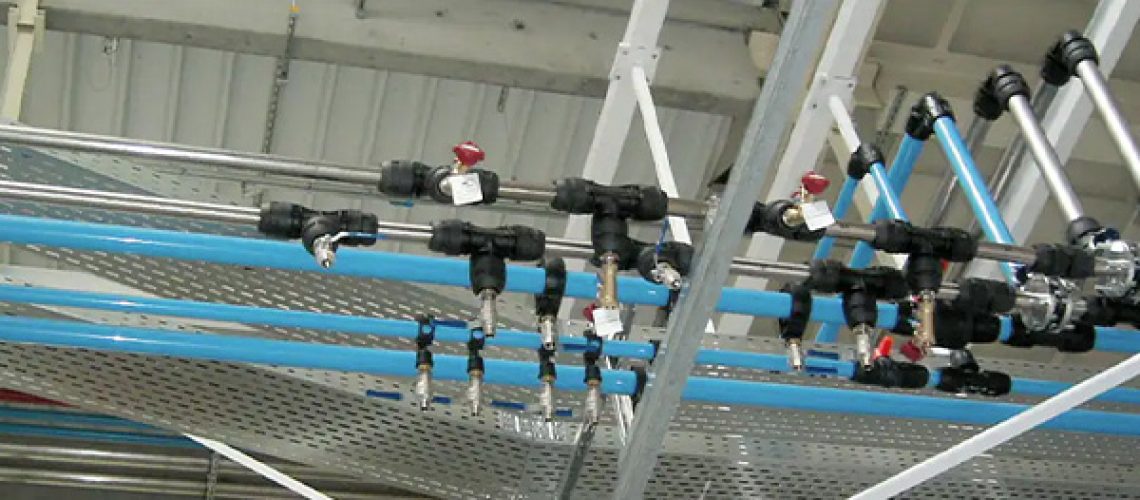So, you’ve determined you need an industrial air compressor for your facility. Whether you’re a first timer or a veteran, deciding the proper size compressor for your facility, as well as how and where you install your air compressor, is critical to your facility’s success. Just as critical is piping your compressed air system.
Next to water, electric and gas, many companies view compressed air as a fourth utility. Without it, manufacturers cannot operate their product-making machinery. This means compressor installation should be treated with the same care and detail that is given to water and electricity installation.
Before the compressor installation begins, there are some simple steps to take. The first step is to understand what size and type of compressor is needed for the site, taking into consideration both current and future needs. This is where a professional compressed air consultant is very important. An air survey (audit) should be performed to discover all the needs of the site. Once this is complete and compressors are purchased, then the planning of the installation becomes an important function.
Once you’ve found suitable location for the compressor in your facility, the next critical step is ensuring proper piping for your compressed air system. All compressors come with a discharge pipe connection to which the customer should connect. This connection is typically in a National Pipe Thread (NPT) specification (ex. 2” NPT). This connection is sized by the manufacturer to have the proper and minimal pressure drop for the best compressor operation. The first item to add is a manual (or automatic) shut-off valve. This disconnects the compressor from the “system” in times of maintenance, shutdown, etc.
After the shut-off valve, then system piping comes into play. The piping to the plant needs to be at least the size of the discharge connection at the compressor. Customers should never reduce the size of the pipe at the discharge of the compressor. Actually, increasing the size of the piping is always beneficial to a compressed air system from a control reliability standpoint. The piping should have a minimal number of 90-degree elbows. In a good installation, sweeping piping radius bends are the best solution. This will reduce the pressure drop that every 90-degree elbow provides. As the piping connects to the main header, it is always good practice to connect the air at the top of the main header. If this is not done, then the pipe coming from the compressor can act as a “drip leg” and force condensation into the compressor.
These installation practices will be the same for the rest of the compressed air equipment such as filters, dryers, receiver tanks, etc. For proper maintenance, a 3-valve bypass should be installed around each maintained piece of equipment, such as filter and dryers. At some point in time, the in-line filters will need to be changed, and dryer maintenance will need to be performed. Another good practice to follow is when the piping contractor is onsite, have them install a pipe with a ball valve before the filters and dryer somewhere near the compressor room or penetrating an outside wall. At times, the compressor will need maintenance and to be shut down. This additional connection will allow the customer to easily hook up a diesel or electric rental compressor so maintenance can be completed. This will maintain the proper uptime
while avoiding unplanned downtime in an emergency shutdown situation.
Please refer to your installation manual and follow
the instruction provided by the manufacturer. If you
have questions, please contact us.











